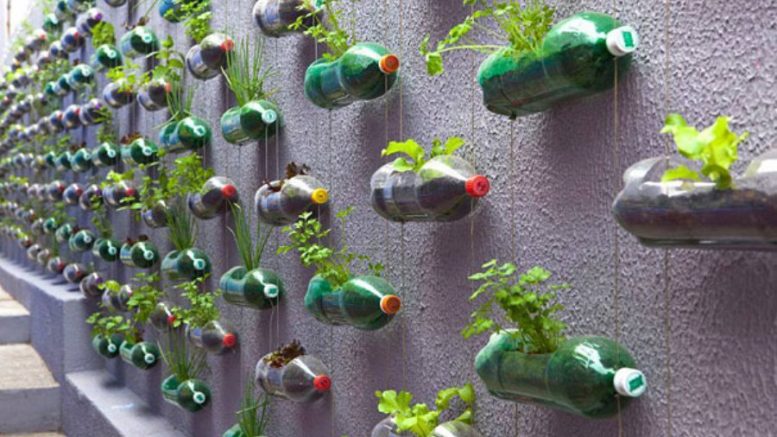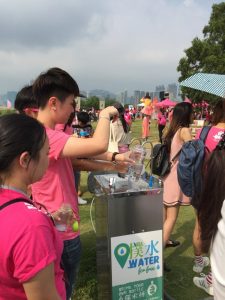By Liang Man-ting, Chan Kit-yung, Tang On-ki, Lam Wing-tung, Nicole Chow and Tsui Oi-ling
Hong Kong is known, or notorious in the eyes of environmentalists, as a consumption-based society. High consumption has created more waste. Of all waste in daily life, about two-thirds are plastic waste. According to an estimate, we produced 1,700 tonnes of plastic waste every day. We consume plastic as if it is an infinite resource; it isn’t. Plastic waste piled up as we consumed food and drink, cloths and a range of products, many of which featured excessive plastic packaging. The city is suffocating under a film of plastic. Government and society must do more to cut plastic waste before it is too late.
Though belated, the Government did act in 2009 to introduce a levy on plastic bags, officially known as Plastic Shopping Bags (PSB) Levy Scheme. More than 3,000 retail outlets including supermarkets, convenience stores, and healthcare and cosmetics stores were covered in Phase One of PSB. The Environmental Protection Department (EPD) claimed early success in reducing plastic bags, saying the number has dropped by 77 per cent in 2013 compared with 2009. But an Audit Commission report published in 2015 said the number of plastic bags distributed at other outlets went up. The overall number of plastic bags distributed across the city only slightly dropped by 1.2 per cent.
Worse, another set of EPD figures were worrying. Of the 843,200 tonnes of plastic waste collected in 2011, 99.5 per cent, or 839,300 tonnes, were exported. That means only 0.5 per cent was being recycled locally. The figure raised serious questions about the local plastic recycling industry.
Recycling industry supposedly plays an important role in cutting plastic waste. Under the present government policy, it is clear that the industry finds it difficult to survive. That has and will deal a blow to plastic waste reduction.
Yan Oi Tong EcoPark Plastic Resources Recycling Centre is one of the recipients of the Community Waste Reduction Projects under the Government’s Environment and Conservation Fund. It had received a total of HK$10 million from the fund since 2010. The Yan Oi Tong centre, however, suffered deficit because of high plastic processing cost. It closed down after the government funding dried up. Their plight shows direct government subsidy can only serve short-term need.
The Government took environmental-protection in 2015 with the setting up of a HK$1 billion-mark fund that provides matching subsidies to recycling industry. Funding for project is being capped at 50 per cent. Of the city’s 1,800 recycling firms, only 94 had applied for the fund in Phase One. Faced with difficulty in operation, recycling companies dare not venture new projects.
Government officials should rethink ways to make good use of the fund to facilitate the development of recycling industry to help tackle the waste issues in the long-run.
While giving support to green industry, it is imperative for the Government to find ways to cut waste at source.
Water for Free is a campaign launched by a non-governmental organisation aimed to reduce waste at source. It is a mobile app that shows the locations of public water fountains and dispensers with an aim to reduce the vast amounts single-use beverage containers. According to the Green Earth, 528 million of plastic bottles were used per day. The campaign is a good initiative to raise awareness of the importance of reducing use of plastic in daily life.
The Government can do more. To coordinate with the Water for Free campaign, the government should install more water dispensers in public and private venues in order to encourage the public to reduce the purchase of bottled water.
In addition to that, the government should consider establish Container Deposit Schemes, under which the deposit of container would be partly or fully refunded to the purchaser when the container is returned. A similar scheme has been run in at least 15 countries including Australia, Canada and Denmark. It has not only encouraged recycling. By reducing waste, it has helped extend the lifetime of landfill.
One of the long-term solutions to save environment is education. The battle against plastic waste is no exception. Educating the public through intensified publicity about the importance of reducing the use of plastic is a must. Youngsters should be given lectures at classrooms and taken to field trips at landfill for them to get a sense of the severity of the problem.
Liang Man-ting, Chan Kit-yung, Tang On-ki, Lam Wing-tung, Nicole Chow and Tsui Oi-ling are Shue Yan University journalism students
Photo: Water for Free Facebook and Bored Panda website
Edited by Chris Yeung



Be the first to comment on "Hong Kong’s plastic waste problem costly"